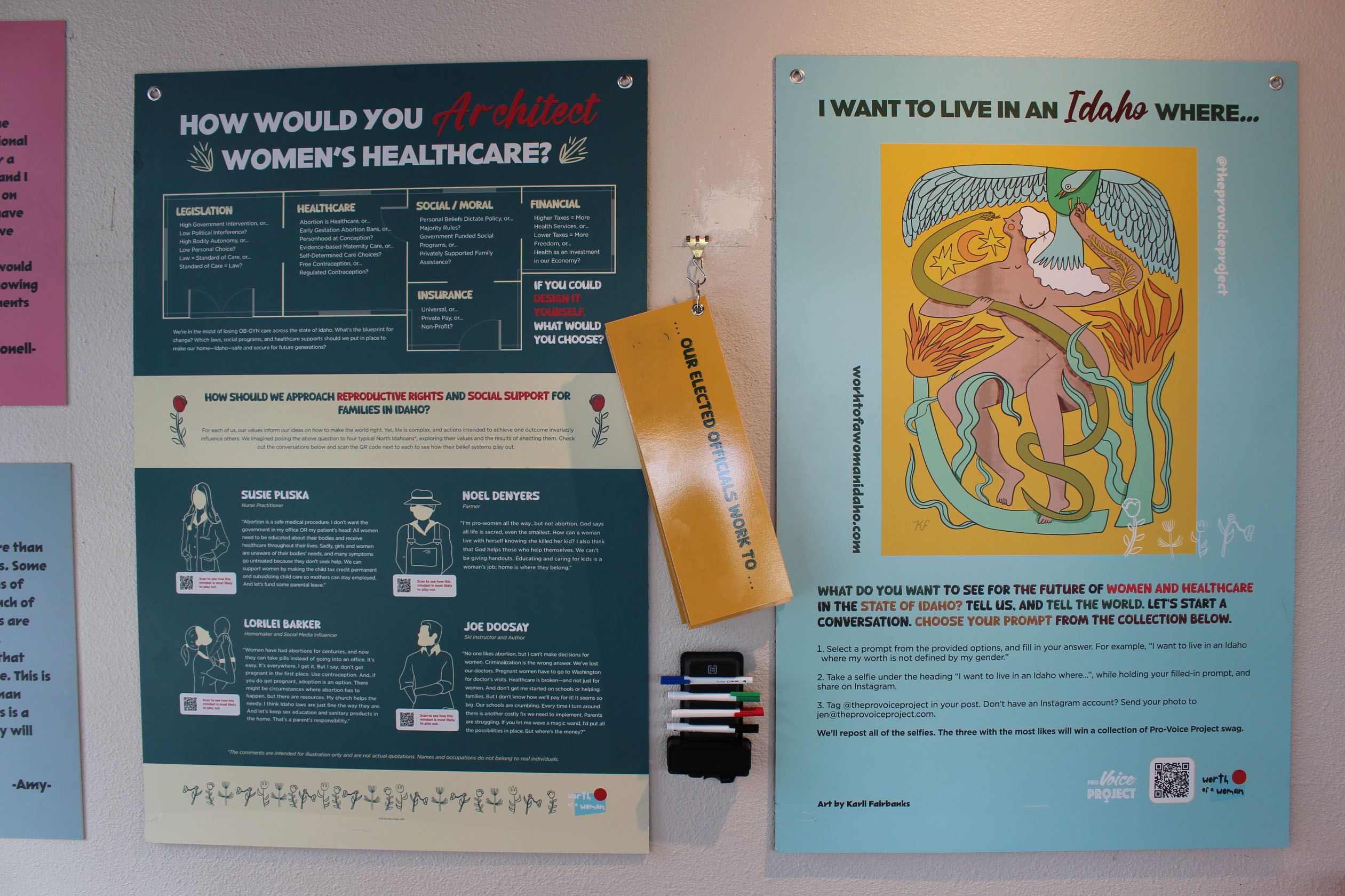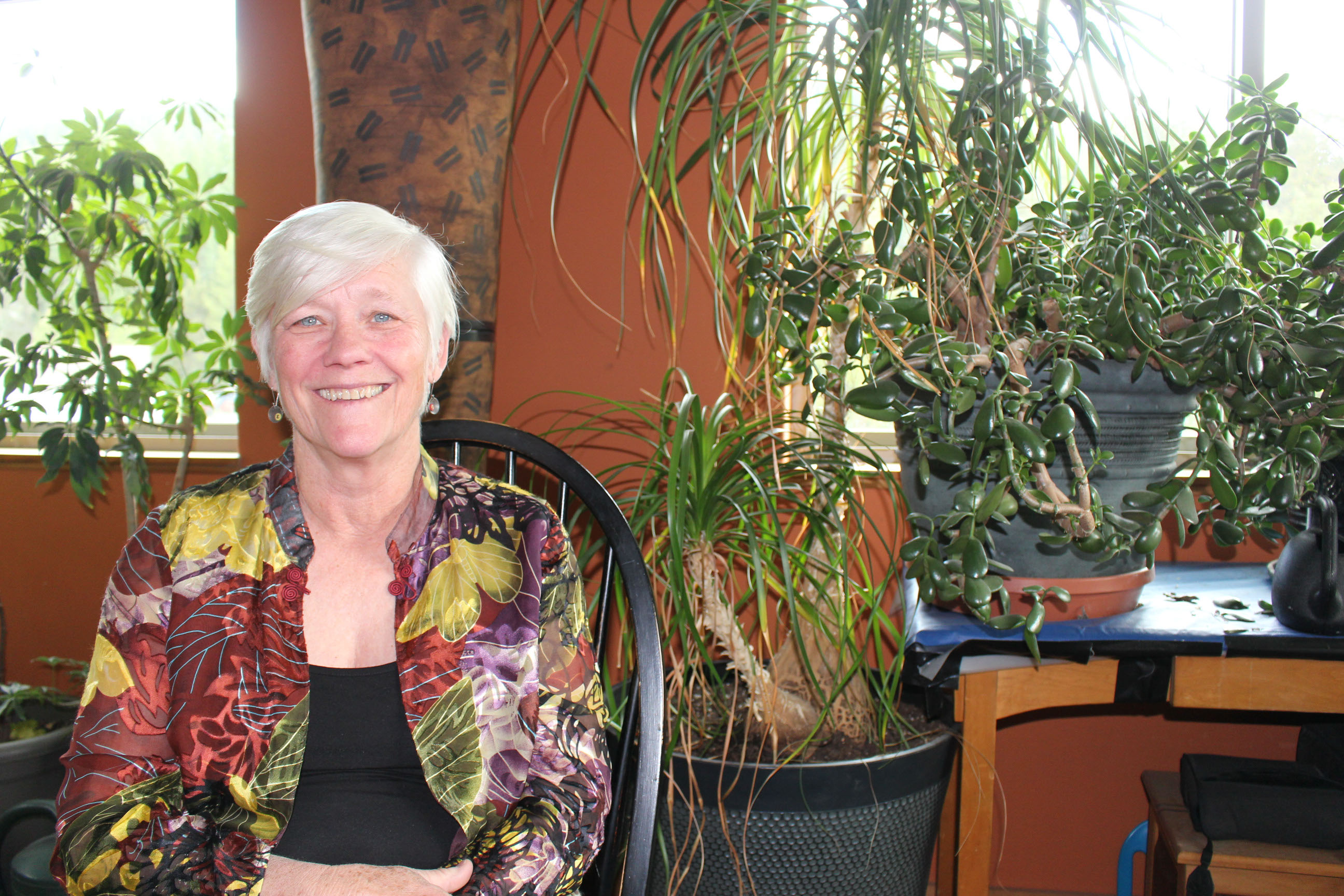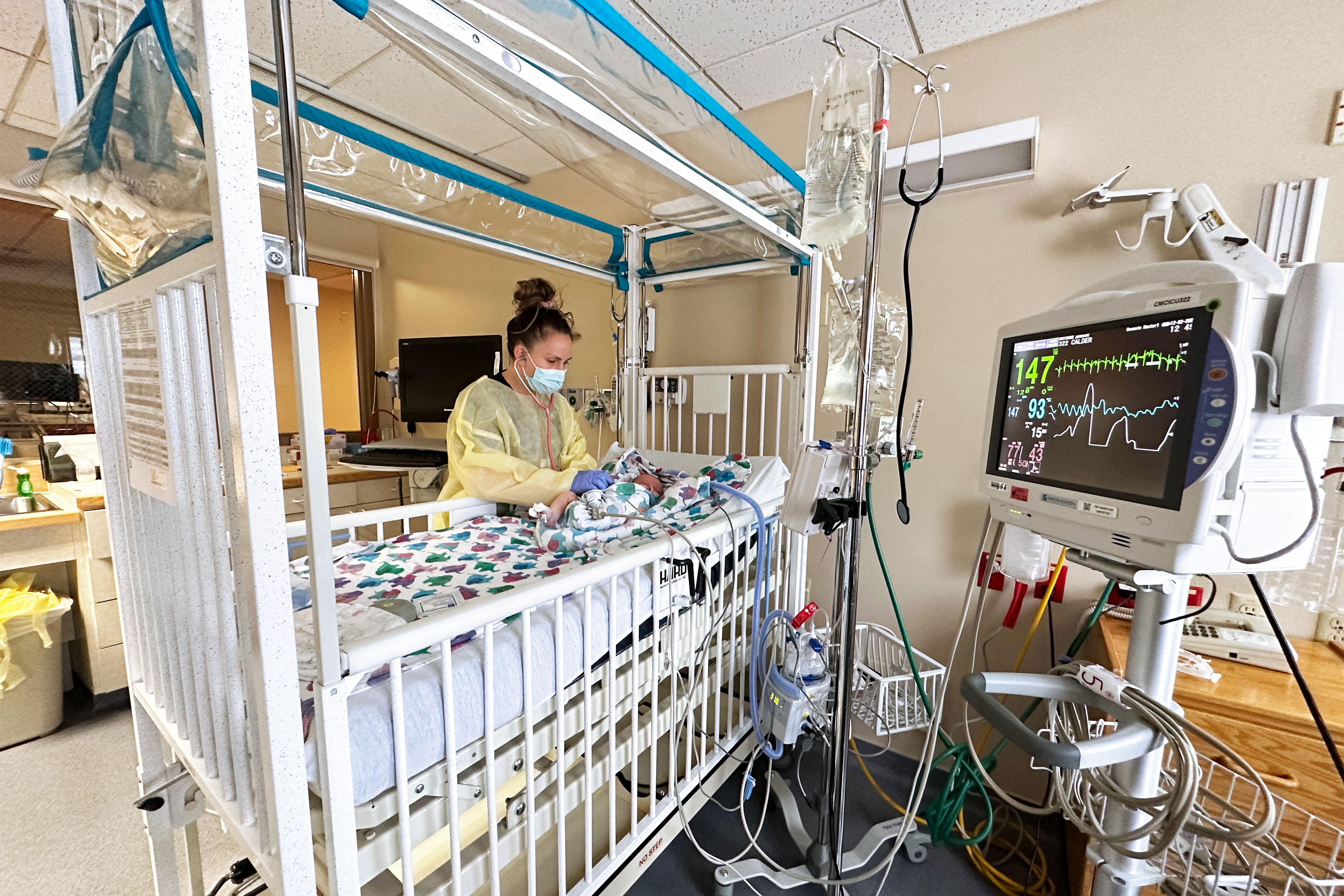SANDPOINT, Idaho — The ultrasound in February that found a mass growing in her uterus and abnormally thick uterine lining brought Jonell Anderson more than anxiety over diagnosis and treatment.
For Anderson and other patients in this rural community who need gynecological care, stress over discovering an illness is compounded by the challenges they face getting to a doctor.
After that initial ultrasound, Anderson’s primary care provider referred her to an OB-GYN nearly an hour’s drive away in Coeur d’Alene for more testing.
Getting care for more serious gynecological issues, like a hysteroscopy, endometriosis, or polycystic ovary syndrome, has become much more difficult in Sandpoint, a town of about 10,000 people in Idaho’s panhandle region. A state law criminalizing abortions drove multiple OB-GYNs to leave town about a year ago.
The effects have been far-reaching. The OB-GYNs who left Sandpoint were also providing care to patients in nearby outlying areas, like Bonners Ferry, a roughly 40-minute drive into Idaho’s northernmost county. Doctors have spoken out about not feeling safe practicing medicine where they could face criminal charges for providing care to their patients. Republican lawmakers in Idaho contend doctors are being used in an effort to roll back the ban, and they declined to amend the law this year.
According to the Idaho Coalition for Safe Healthcare, a group advocating for a rollback of the state’s strict abortion ban, at least two hospitals, including Bonner General Health in Sandpoint, ended labor and delivery services in the 15 months after the state criminalized abortion in 2022. During that same time period, the number of OB-GYNs practicing in Idaho dropped by 22%. The report’s authors noted that many rural residents rely on consultations from medical specialists in urban parts of the state that are already struggling to provide care.
Those departures have expanded care deserts and added obstacles between patients and care, including for Anderson, 49.

Anderson’s car broke down when she was on the way to see an OB-GYN in Coeur d’Alene a few weeks after her initial ultrasound. Her husband took off work to drive her to a rescheduled appointment the same day. After hours of mishaps, she arrived for the visit, which lasted about 15 minutes. There, the doctor told her she’d need to come back for a hysteroscopy — an exam that shows the inside of the cervix and uterus — a few weeks later, followed by another appointment to go over results.
Four months later, in June, early results showed that the mass in Anderson’s uterus did not appear to be cancerous. She’s relieved, she said, but still concerned about nearing menopause and not having the support of an OB-GYN nearby to help her manage any symptoms or health issues that could come up.
“It sure was a whole level of stress that just added on because I had so much further to transport,” Anderson said. “Three years ago I would have been 10 minutes away from my appointment, not 60 minutes away.”
Those hardships patients face weigh heavily on the specialists who left.
Amelia Huntsberger, an OB-GYN, said that she and her husband are still grappling with a feeling of grief after being “forced out of Idaho” last year. They had lived in the state for more than a decade and practiced in Sandpoint. While leaving was a difficult decision, she said, she has no doubt it was the right one for her; her husband, who was a doctor in the emergency room at Bonner General; and their children.
“I think about things like who we are as a people,” Huntsberger said. “What do we value, and do our actions reflect our values?” Limiting access to care for women, pregnant or not, and their infants suggests lawmakers do not consider them important, she said.
Usha Ranji, an associate director for Women’s Health Policy at KFF, said she has heard anecdotally about providers leaving states with strict abortion bans like Idaho’s. Some recent medical graduates are also avoiding residency positions in states restricting abortion, making it harder to replace the outgoing providers, Ranji said.
Sandy Brower, a spokesperson for Bonner General, said the hospital is working to hire a gynecologist and is focused on building out its family provider team. She said other providers at the hospital are still treating women before and after pregnancy, but not during delivery unless it’s an emergency and the person cannot be transported.
Susie Keller, CEO of the Idaho Medical Association, said there’s a growing number of doctor vacancies in the state and that the number of applicants has “absolutely plummeted and those jobs are taking about twice as long as normal to fill.
“We are witnessing the dismantling of our health system,” Keller said.

As more community members feel the effects of a strained health system, some are following in the path of the doctors — they’re considering leaving. Anderson is among them.
Local education issues play a large part in that decision-making process, she said, as she considers her 9-year-old daughter’s future. But access to women’s health care is another piece of the puzzle.
“If I don’t have the care I need and she doesn’t have the care she needs,” Anderson said, “is that really somewhere we want to live?”
Ranji said polling indicates health care is a priority for people, so it could play into decisions about where they want to plant roots. And that leads into another way community members could respond to the changes in local care — by voting in state elections.
Primary election results from May in northern Idaho, where Sandpoint is located, showed signs of voters backing Republican candidates who hold more moderate views on abortion. Former state Sen. Jim Woodward narrowly beat Sen. Scott Herndon, a fellow Republican who sought reelection to his seat in the legislature.
Woodward, a self-described pro-life candidate with a stance against elective abortions, supports efforts to include exceptions for the health of the mother and removing the threat of felony charges against doctors who perform abortions. Herndon, on the other hand, provoked strong reactions during last year’s legislative session when he sponsored a bill that would have removed the already strict law’s current narrow exceptions for rape and incest.

Kathryn Larson, 66, has been campaigning as a Democrat for a seat representing most of Boundary and Bonner counties, the two northernmost in the panhandle region, in the state’s House of Representatives. She also has had recent firsthand experience falling into the care gap created by the exodus of OB-GYNs in Sandpoint.
In January, Larson went to the emergency room at Bonner General, a 25-bed critical access hospital, with severe chest pains. A cardiologist suggested an infection could be to blame. Larson said she also experienced vertigo and rapid heartbeat and later developed symptoms of a urinary tract infection. She was given rounds of antibiotics to treat the infection, but the symptoms returned.
More testing finally revealed the crux of the issue — Larson was dealing with a prolapsed bladder, which is not life-threatening but causes discomfort or pain and affects 1 in 3 women in their 60s.
After about five months of back-and-forth communication with providers in Post Falls and the eastern Washington city of Spokane, she scheduled an appointment for surgery in early June in Spokane, more than an hour’s drive from Sandpoint. Following surgery, during which doctors implanted a mesh structure to support her bladder, Larson is spending six to eight weeks recovering before heading into the final stretches of election season.
She said the November election will help others in her party tell if it will be possible to work across the aisle to loosen restrictions on the abortion policy during next year’s legislative session. She wants to slow the loss of needed providers across the state.
“People don’t feel safe,” Larson said.
The U.S. Supreme Court ruled on June 27 that Idaho must for now continue to allow abortions in medical emergencies. The ruling came in a lawsuit filed by the Biden administration, which argued that the federal Emergency Medical Treatment and Labor Act requires such care.
But the ruling does not provide a permanent solution. It kicks the case back to lower courts. Confusion remains over a doctor’s ability to perform abortions even in emergency settings, and the Idaho Medical Association said it will continue to work toward a clear health-of-the-mother exception within state law during next year’s legislative session.
“We still need more clarity for our state’s doctors,” OB-GYN Megan Kasper said in a medical association press release.


